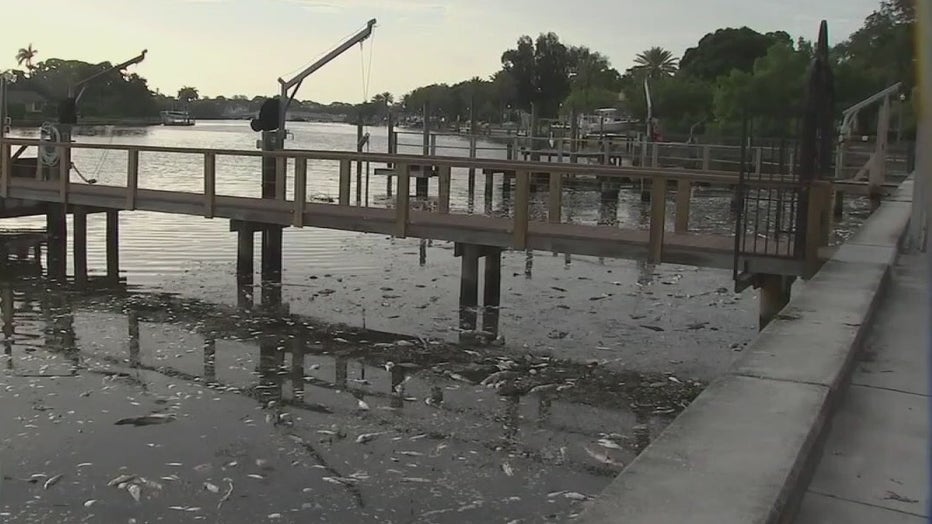Scientists prepare for second field test of clay mixture used to mitigate red tide

Scientists use clay to stop effects of red tide
Two years after scientists first field tested a clay mixture to mitigate red tide, they are looking back on what they learned in Sarasota County and preparing for a new field test.
SARASOTA, Fla. - Two years after scientists first field tested a clay mixture to mitigate red tide, they are looking back on what they learned in Sarasota County and preparing for a new field test.
Marine scientists have been hard at work trying to find the best ways to fight the effects of red tide in Tampa Bay. They tried using clay flocculation for the first time in 2021, a method that uses a clay mixture to spray on the water to kill the harmful toxins that cause the algal blooms.
It was promising then, and now researchers are hoping to prove the clay really works and saves money.
"We couldn't measure all of the parameters we wanted to really show whether there were any impacts or just other things," said Donald Anderson, a senior scientist in the biology department of the Woods Hole Oceanographic Institution in Falmouth, Massachusetts.
Anderson, who leads the project, is working with Mote Marine Laboratory, the Florida Fish and Wildlife Conservation Commission and Florida university scientists. He said they are running small and large experiments.
"You might wonder why someone from Massachusetts is working in Florida. Well, it's because you have good funding, and you've got a very serious problem," Anderson said. "What happens to all that material as it hits the bottom, what happens to the toxin that goes down there with those cells? Obviously, that's something we want to study."
The next step is finding another permit to test in Tampa Bay, he said.
READ: Some people susceptible to neurological effects of red tide, new study suggests

"What we've found is that you can add some very safe things like polymers that are used in drinking water treatment. They can actually take the clay particles and create a net from them. As that falls, it's like capturing cells as it goes down. So how much of that polymer should we use?" said Anderson. "There's always too many questions for us in science, but the main ones right now are to determine in these natural waters, how much clay can we use to be effective."
Anderson said the clay mixture not only captures and kills what’s harmful in the water, but it can also help kill toxins that are released into the air.
"Floridians are used to the aerosol when they walk along the beach. They can't breathe, and they're coughing from the toxin," said Anderson. "So even though clay can be very effective in removing cells, what we're trying to do now is figure out ways to either sequester that toxin or to destroy it at the same time that the clay is removing the cells, and we're starting to make progress there. But that is still one of our bigger challenges right now."
Scientists found they can use a very small amount of clay for the method to work.
"In terms of impacts the way the technology of these clays has advanced, we can now use 1/50 or 1/100 of what we used to think was necessary, which means the impacts from the treatment can be diminished dramatically because we can use such a small amount," said Anderson. "The costs also go down dramatically. So, there's a very good trend where we are now having. We can actually start seeing something being truly cost-effective even over fairly large areas with very little potential impact."
MORE: Florida to put millions of dollars toward restoring waterways, tackling red tide
While clay is not the only answer, for now Anderson said they want to prove it can work and that it’s safe for the environment.
Anderson said they are working to get a permit for another field test, so until then they are looking at different approaches to kill various sizes of harmful algal blooms.

